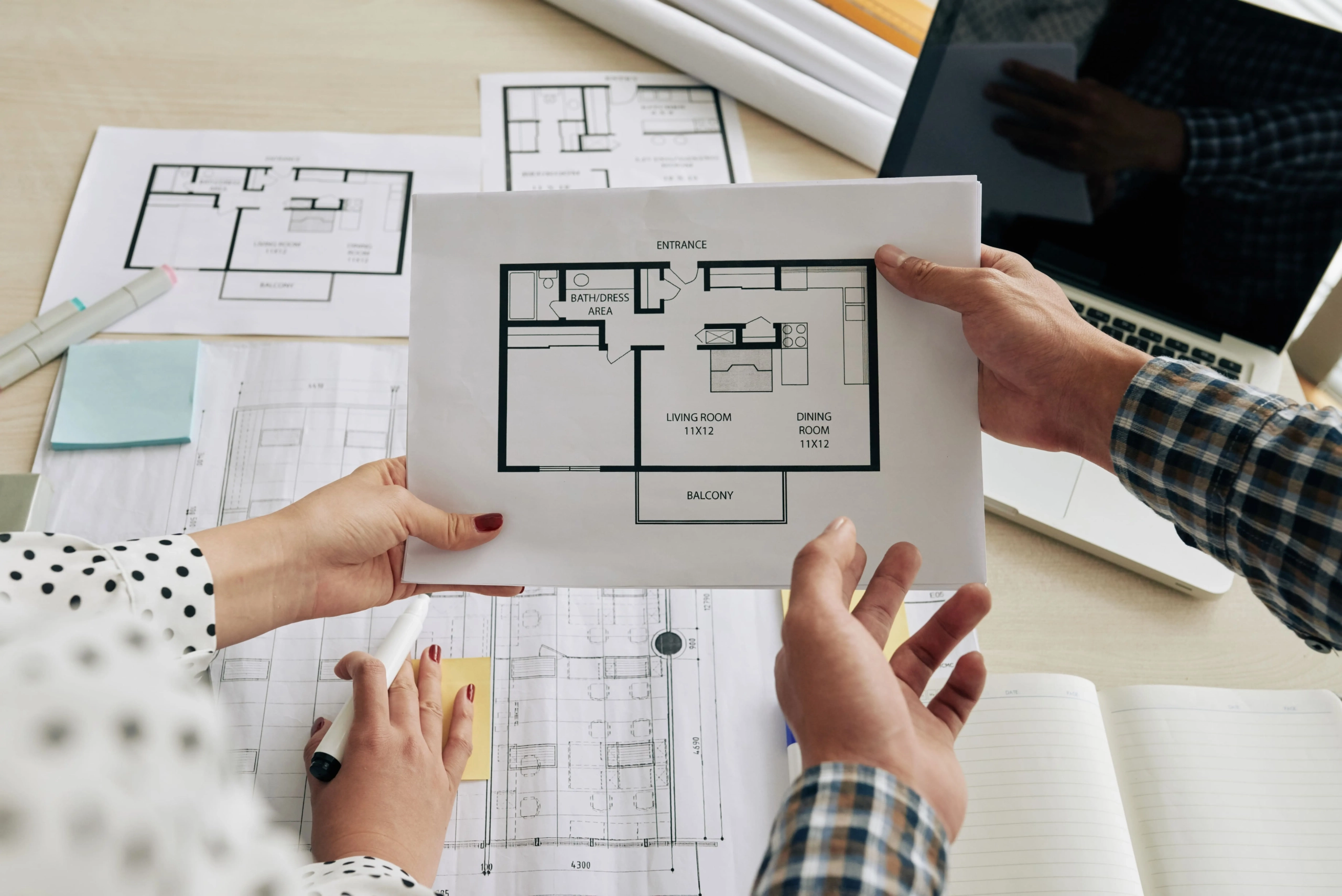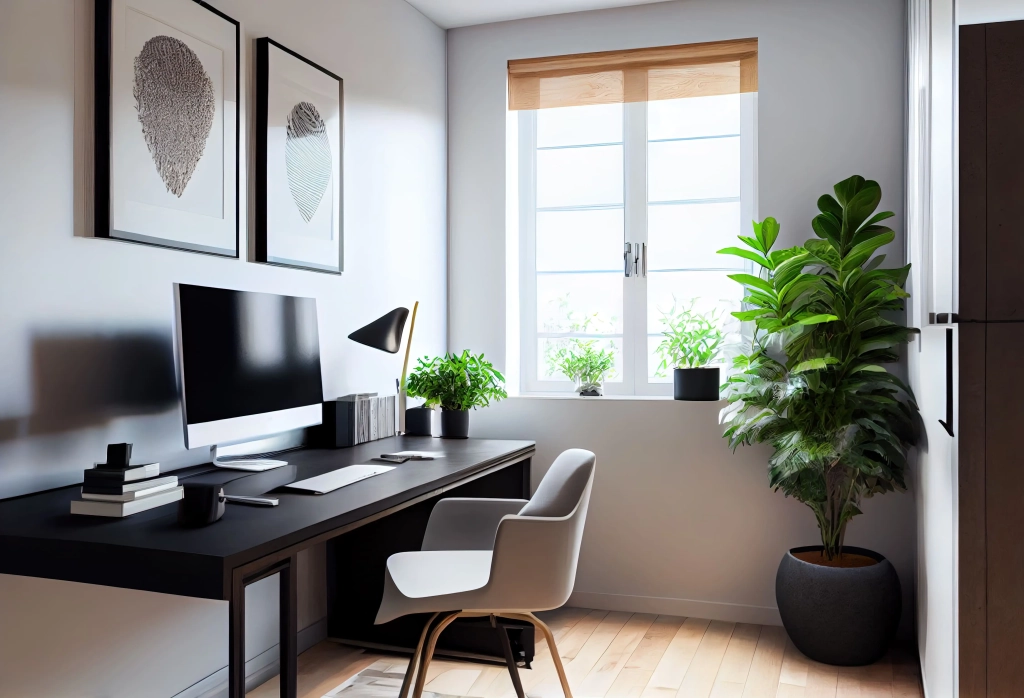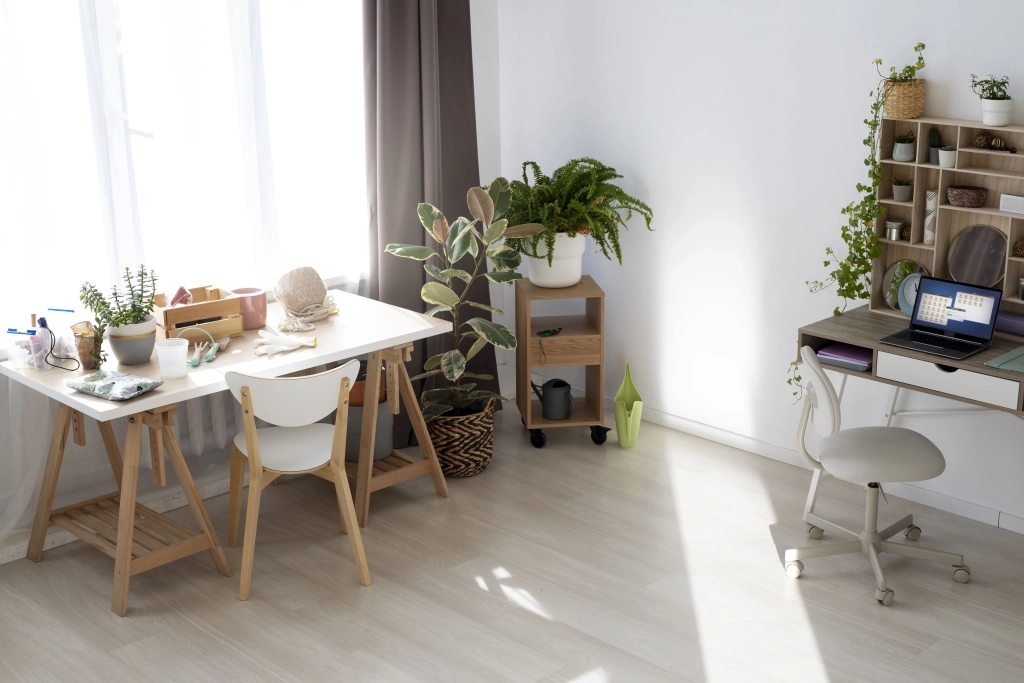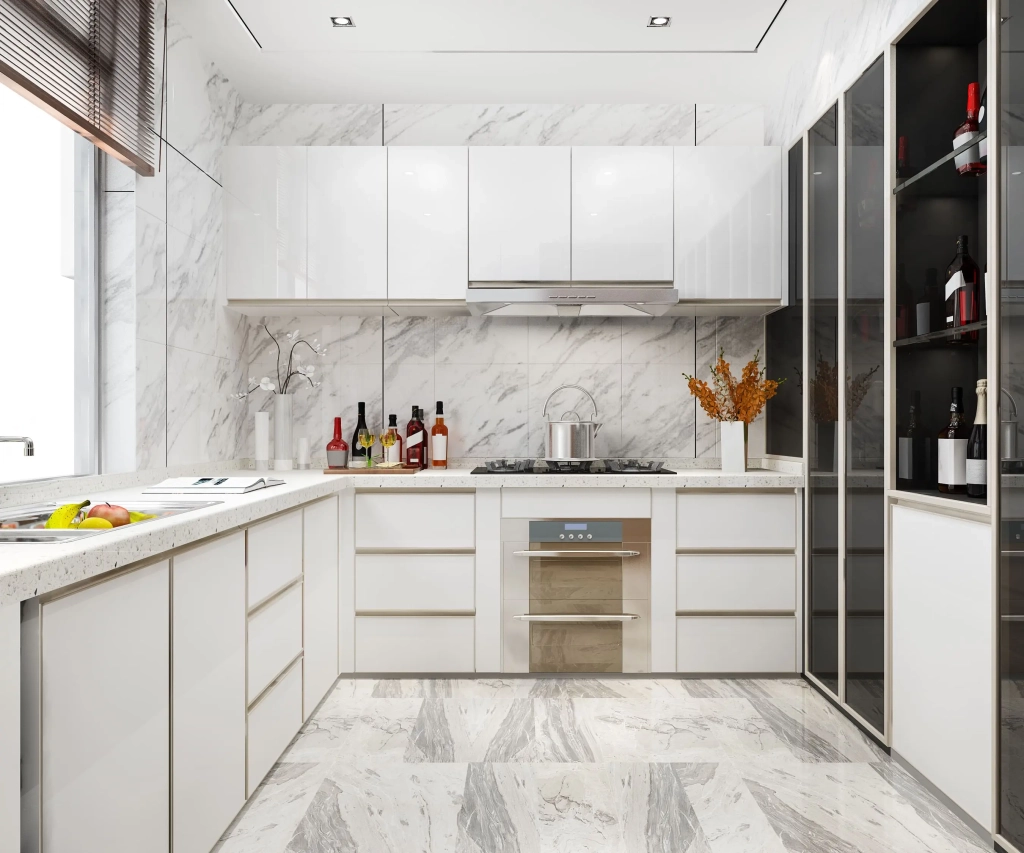Buyer’s Delight: Interior Features Most Desired in 2023’s Real Estate Market

Keeping an eye on evolving homebuyer preferences can be a game-changer for real estate professionals and homeowners alike. The impact of societal trends coupled with technological advancements continues to redefine the ‘ideal’ home features buyers foresee in their potential living spaces. Especially in the challenging post-pandemic landscape, buyers’ tastes have notably pivoted towards more functional, sustainable, and technologically integrated homes. This article unveils the top interior features expected to dominate the 2023 real estate market.
RELATED: Rental Ready: Top Interior Design Tips to Boost Property Lease Rates
Open Floor Plans
One of the most consistent trends over the past decades has been the popularity of open floor plans. One significant factor is the scope of flexibility that open floor plans offer; they allow homeowners the ability to curate their space to align with their unique needs and preferences. They can make a moderate amount of square footage feel expansive, which is particularly appealing for urban dwellers where space can be at a premium.
Pros
- Increased Perceived Space: Open floor plans create an illusion of more space by reducing visual barriers, making properties appear larger than their actual square footage. This perceived spaciousness often appeals to buyers and can consequently raise the property’s market value.
- Enhanced Natural Light: Without walls to block sunlight, open floor plans typically enable more natural light to fill the space. This feature is appreciated by many prospective buyers for its aesthetic appeal and its potential to reduce electricity costs, thus adding to property value.
- Adaptability: Open floor plans offer the flexibility to personalize space according to the buyer’s lifestyle needs (whether it’s work-from-home needs, homeschooling, or entertaining), which can add inherent value to the property.
Cons
Concerns about privacy, noise levels, and the challenges of defining distinct living areas within an open plan.

Home Office Spaces
In the wake of the global pandemic and the subsequent surge in remote work, home offices have grown to be an essential feature of real estate buyer preference. This phenomenon is not merely a temporary adjustment but seems to have set the stage for a long-term change in occupational structures and preferences.
Working from home is a viable and sometimes preferred option for both employers and employees due to a range of reasons. For workers, eliminating the commute time increased productivity, provided a better work-life balance, and reduced expenses related to transportation and meals. For companies, the move towards remote work allowed for reduced overhead costs, a more resilient business model in the face of unexpected circumstances, and access to a wider pool of talent without geographical restrictions
A well-equipped home office offers a quiet, comfortable, and productive environment for remote work. Features like a dedicated desk, an ergonomic chair, good lighting, and reliable technology and internet connection are essentials. However, as this feature becomes more prevalent, design elements such as soundproofing, upscale video conferencing backgrounds, and a relaxing ambiance are becoming one of hot property amenities.

Sustainable Features
The rising preference for eco-friendly, or “green”, homes is a reflection of evolving societal values that prioritize sustainability and environmental conservation. This trend is driven by a mix of environmental consciousness, health concerns, potential cost savings, and innovative green technologies. With the increasing awareness about environmental preservation, sustainable features have become a significant attraction for today’s conscientious buyers.
Examples of popular sustainable features:
- Solar Panels: These systems convert solar energy directly into electricity and prove to be a long-term, cost-effective, and renewable source for power. By decreasing reliance on grid electricity, they reduce the environmental impact and can increase property value.
- Energy-Efficient Appliances: ENERGY STAR-rated appliances consume less electricity and water, significantly shrinking utility bills and carbon footprint. This category includes refrigerators, washers, dryers, and HVAC systems.
- Low-E Windows: Low-E (Low Emissivity) windows optimize a home’s thermal efficiency by reflecting heat back to its source, keeping the house cooler in summer and warmer in winter.
- Rainwater Harvesting Systems: These systems collect and use rainwater for outdoor watering or indoor non-potable use, reducing reliance on municipal water supply and mitigating stormwater runoff problems.
- Green Roofs: Green roofs, or “living roofs”, are roofs partially or entirely covered with vegetation. These roofs reduce heat loss, help to insulate a building, and support local wildlife.
- Smart Home Technologies: Smart home technologies, like programmable thermostats or automated lighting systems, help to better manage energy consumption, promoting a more energy-efficient home.
These examples represent a growing trend of sustainable features that homeowners are increasingly looking to incorporate into their homes. Apart from enhancing the building’s efficiency and environmental impact, these measures can also boost its market value.
Smart Home Technology
The demand for smart home features is experiencing steady growth in modern living spaces, as homeowners increasingly seek convenience, energy efficiency, and an enhanced lifestyle. Driven by factors such as aging populations, improved internet connectivity, increasing affordability, and seamless integration with voice assistants, smart home solutions have transformed household routines, bolstered safety and accessibility, and optimized energy consumption. As a result, the adoption of smart home features is poised to surge forward, promising significant advancements in the way people live and interact with their homes.
Here are some widely adopted smart home features:
- Home Automation Systems: These incorporate connected devices like smart light bulbs and switches, smart thermostats, and smart outlets enacted through automated rules or schedules.
- Home Security Systems: Features like smart locks, video doorbells, and home surveillance cameras increased home safety. Some systems even offer remote monitoring for real-time security updates.
- Smart Appliances: From smart refrigerators to ovens, these internet-enabled appliances can be remotely controlled, offer valuable alerts, and optimize energy use.
- Voice Control Smart Home Hubs: Amazon Alexa, Google Home, and Apple’s HomeKit, serve as central hubs to integrate and control various smart home devices via voice commands or mobile apps.
- Smart Lighting: This allows homeowners to remotely control the lighting in their homes, set schedules, adjust brightness, and even change colors.
- Home Entertainment Systems: Smart TVs, sound systems, and streaming devices, which can be integrated and controlled for a custom-built home entertainment experience.
Smart home technology has a significant impact on the real estate market, enhancing the value of properties equipped with these features. Buyers today, particularly millennials and tech-savvy individuals, are increasingly attracted to properties with smart technologies as they offer convenience, efficiency, and a sense of modernity.
Outdoor Living Spaces
Accessible outdoor living spaces have become increasingly important for homebuyers, offering value beyond the confines of the home’s interior. These spaces are seen as an extension of indoor living areas and can significantly enhance the appeal and functionality of a property.
Here are some popular desired features that can be integrated into gardens, patios, and other outdoor areas:
- Comfortable Seating: Plush, durable, and weather-resistant furniture arrangements promote relaxation and encourage outdoor gatherings.
- Outdoor Kitchen or Grill area: A designated area with a grill or full outdoor kitchen enables residents to cook, dine, and entertain seamlessly in the open air.
- Pergolas or Shade Structures: Providing shade is essential for comfort during sunny days. Pergolas, umbrellas, or other shade structures can also create a visually appealing focal point.
- Landscape Lighting: Illuminating pathways, patios, and garden features boost aesthetics and safety at night.
- Gardens and Landscaping: Well-designed flowerbeds, shrubs, and trees not only beautify outdoor spaces, but also provide privacy and promote environmental sustainability.
- Decks or Patios: A well-constructed deck or patio instantly adds functional space to any backyard, creating an ideal area to relax and entertain.
- Children’s Play Area: Having a dedicated area for children to play, like a playground or sandbox, can be valuable for families with young kids.
- Outdoor Entertainment System: Installing weatherproof outdoor speakers or a projector screen can elevate the overall outdoor experience.
Outdoor spaces, when well-designed and maintained, can significantly enhance a property’s appeal to potential homebuyers and improve the overall living experience.

Spacious Kitchens with Modern Amenities
Often described as the heart of the home, the kitchen is a hub of activity, from preparing meals and eating as a family to hosting social gatherings. Its convenience and aesthetic appeal can significantly dictate the overall living experience for the homeowners. Furthermore, the condition and design of the kitchen are critical when determining a property’s resale value. Potential buyers often turn a discerning eye to this space, looking for modern appliances, functional design, and an overall sense of comfort and style that aligns with their preferences.
Storage is another crucial aspect, as kitchens require space to store cookware, utensils, appliances, and food. Kitchens with well-planned storage solutions tend to be more functional and user-friendly, aspects that potential buyers appreciate. It’s not a surprise that homeowners often see a substantial return on investment from kitchen upgrades and renovations, owing to their important role in influencing potential buyers’ decisions.
Here are some key amenities expected in today’s modern kitchens:
- Smart Technology: Increased integration of smart devices and appliances will continue to redefine convenience in kitchen spaces. This could include everything from smart refrigerators to touchless faucets.
- Multifunctional Spaces: As homes become more versatile, so too will kitchens. Expect areas with dual purpose, like kitchen islands serving both as a prep station and dining area.
- Return to Traditional Design: While maintaining a modern aesthetic, kitchens may see a return to more traditional design elements, steering away from the minimalist look.
- Storage Solutions: As homeowners continue to value functionality, clever storage solutions will become more important. Expect concealed storage and inventive ways to make the most out of space.
- Unique Aesthetic Choices: Trend predictions also point toward a departure from cookie-cutter kitchens, with an emphasis on mixing more than just one finish and hardware style
In addition, cooking and diet trends have a profound influence on kitchen design, given that our culinary behaviors and needs directly shape how we use and interact with this space. For example, the recent focus on healthy living and wellness has propelled many to embrace diets such as veganism, gluten-free, and meal prepping. These dietary trends necessitate different types of storage and preparation space, thus influencing kitchen design.
Today’s real estate landscape is looking to cater to buyers favoring convenience, environmental consciousness, and the alignment of home layouts with evolving work dynamics. Both real estate professionals and homeowners looking to sell would be well-served to take note of these trends when upgrading or marketing properties.
Read more here: AllProperties Latest Blogs




